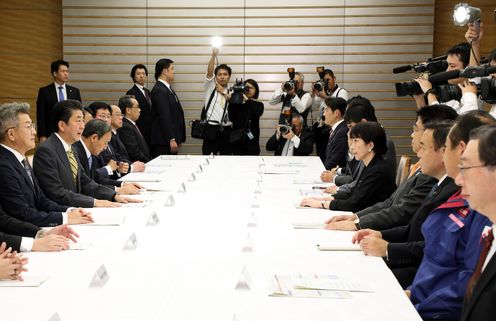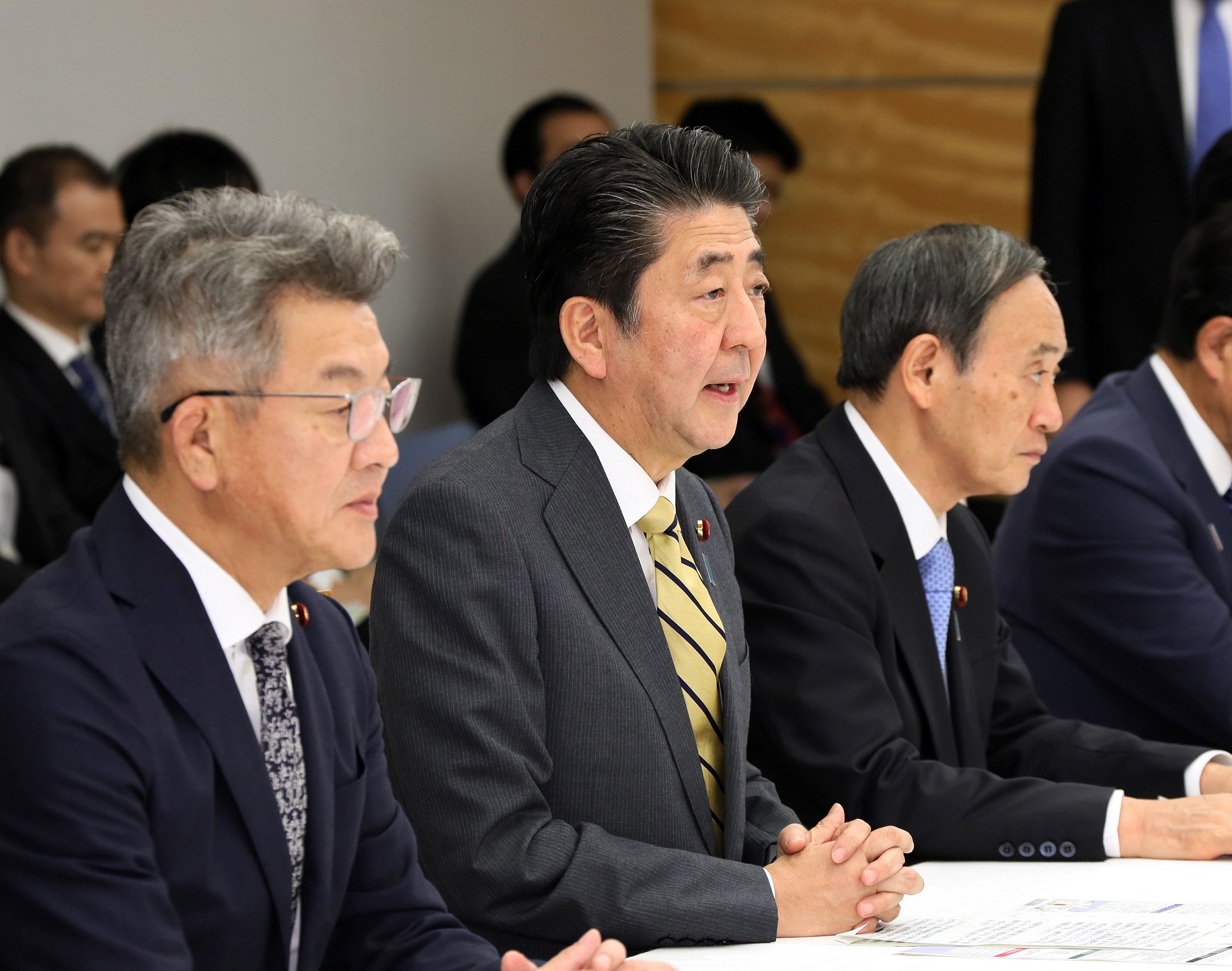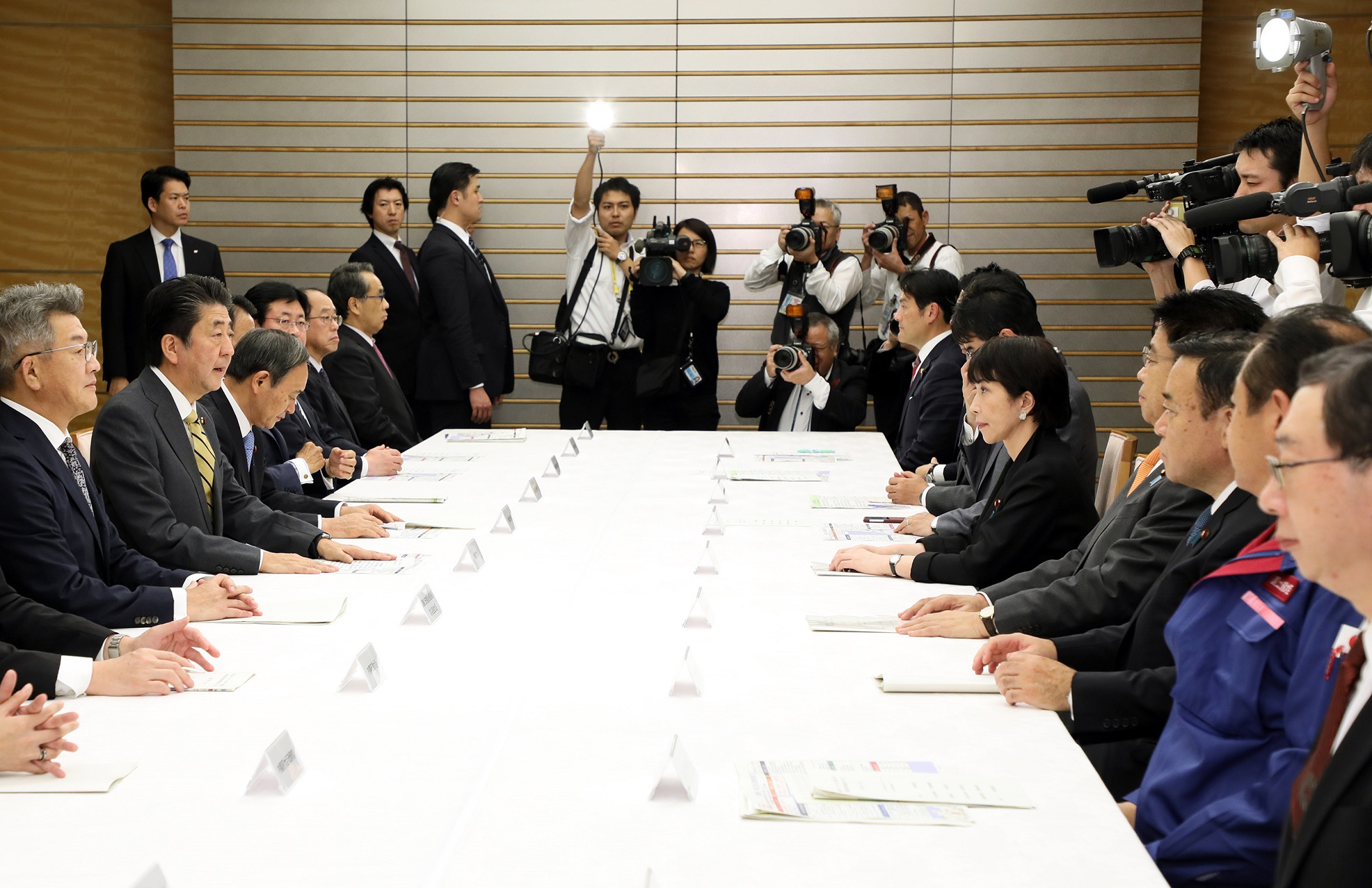Home > News > The Prime Minister in Action > October 2019 > 12th Meeting of the Emergency Response Headquarters for Typhoon No. 19 of 2019
The Prime Minister in Action
12th Meeting of the Emergency Response Headquarters for Typhoon No. 19 of 2019
October 25, 2019

Photograph of the Prime Minister making a statement (1)

Photograph of the Prime Minister making a statement (2)
[Provisional Translation]
On October 25, 2019, Prime Minister Shinzo Abe held the 12th meeting of the Emergency Response Headquarters for Typhoon No. 19* of 2019 at the Prime Minister’s Office.
Based on the discussion, the Prime Minister said,
“Currently, the effects of a low pressure system and Typhoon No. 21** have caused torrential rain, centered on the Kanto region, and damages have already occurred. Heavy rains are forecast for the Tohoku region into tomorrow morning. I ask everyone to continue providing accurate information to the citizens and, in particular, also ask the police, firefighters, the Japan Coast Guard, and the Self-Defense Forces (SDG) to be fully prepared for emergency and disaster response.
I ask the people in the areas affected by the disaster to pay full attention to the information issued by the local governments, never let down their guard, and be mindful of evacuating early, in light of the potential danger of flooding of rivers and landslides.
It will soon be two weeks since the disaster caused by the heavy rains from Typhoon No. 19*. Thanks to the hard work of all parties involved, recovery and reconstruction are moving forward steadily in the disaster-affected regions. The Government must continue to work as one and further accelerate these efforts.
Above all, it is crucial to issue Disaster Victim Certificates swiftly so that disaster victims can start to rebuild their daily lives. Over 300 local government staff from across the country have been dispatched to support the advancement of damage certification assessments. I ask you to strengthen these kinds of support.
It is also important for those who are affected by the disaster to quickly move from evacuation centers to housing where privacy is secured. As of today, we have made approximately 6,900 units of public and other housing available. Approximately 700 units have already been designated to accept residents.
In addition, for the sake of the health management of evacuees, some local governments are promoting the use of hotels, Japanese inns and other accommodations in the private sector, and, in preparation for a potential influenza pandemic, implementing initiatives to provide vaccinations to the elderly in evacuation centers free of charge.
Out of the overall 164,000 homes that suffered water outages, we have restored water for all but approximately 9,700 homes. While it is expected that services will be restored for almost all areas during the following week, the SDF also continues to offer water supply and bathing assistance in order to alleviate the discomfort of the disaster victims as much as possible.
Furthermore, concerning emergency repair work for roads, we are receiving requests from the disaster-affected local governments asking the national government to handle such work on their behalf. By applying the Act on Reconstruction from Large-Scale Disasters, the Government will conduct emergency repair work for roads at six locations managed by local governments, including the Unnojuku Bridge in Tomi City, Nagano Prefecture.
The Team to Support the Daily Lives of Disaster Victims is now leading efforts to compile swiftly a policy package towards the rebuilding of lives and ‘nariwai (occupations and livelihoods that sustain people's daily lives).’
We intend to offer seamless supports, building on the unique elements of each area and the needs of the disaster victims, including measures to restore electricity and water services, the disposal of waste, debris, and soil, and the provision of housing for those affected by this disaster.
In addition, with respect to the agriculture, forestry and fishery industries, 102.7 billion yen of damage has already been confirmed. We are also receiving many reports of damage from businesses affected by the disaster, including flood damage to presses and various parts in factories. We will offer firm support to help people working in the agriculture, forestry, and fisheries industries and micro, small and medium enterprises resume their businesses, so that they can see hope for tomorrow.
Furthermore, we will offer assistance for the tourism sector, and support to ensure that the disaster does not deal a blow to employment in the affected regions.
I ask everyone to work as one to materialize support measures, listening carefully to the requests from the areas affected by the disasters, so that we can compile a policy package swiftly.”
*Typhoon Hagibis
**Typhoon Bualoi


